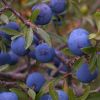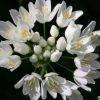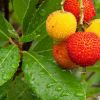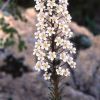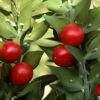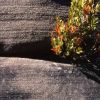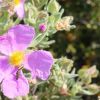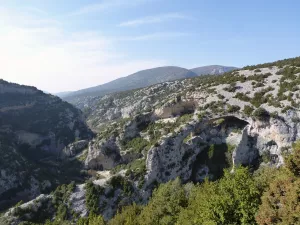The rocky cliffs of the Guara mountain range create an inhospitable environment that impedes the development of vegetation. Plants here have to face up to drought, a scarcity of soil, the force of gravity and extreme variations in temperature. However, highly specialised and unique plants do colonise these phenomenal cliffs, some of which are only found in this one specific area. An example is Petrocoptis guarensis, which attaches its flowers to the limestone ceilings of hollows in the Mascún, Balced and Vero canyons in order to capitalise on moisture and nutrients. Other endemic species to the central Pyrenees that are also found in this area include Ramonda myconi (or the Bear’s Ear locally) and Saxifraga longifolia (or the King’s Crown locally). The latter is a beautiful plant that dies soon after the exertion of flowering.
The northern face of the Reserve is reminiscent of the Alps, as you can see beech woods (Fagus sylvatica). The southern face, on the other hand, is almost Mediterranean: groves of gall and holm oaks, thickets of Kermes oak (Quercus cocciffera), juniper (Juniperus communis) and box (Buxus sempervirens) dotted with strawberry trees (Arbutus unedo), wash the mountains with colour, and with exuberant beauty in spring and autumn, changing with the seasons.
The abundance of woods makes the Somontano into a fine area for mycology, where the popular saffron milk caps (Lactarius deliciosus), delicious parasol mushrooms and chanterelles are gathered, as well as aromatic black truffles.



